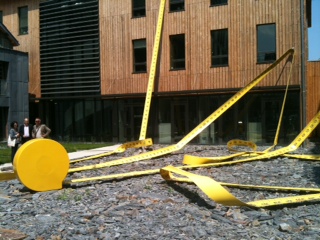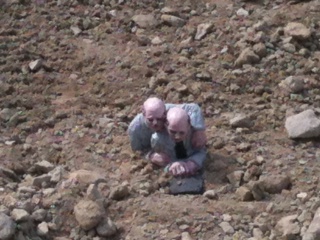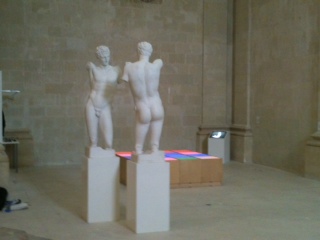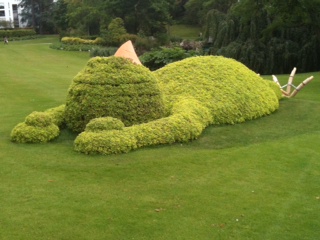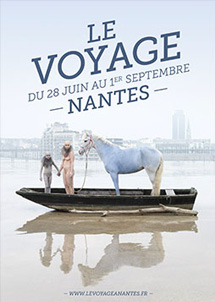
What do you do with a dying town?
For two decades Nantes, once a major slave trading port and for most of the last century France's key Atlantic maritime center, saw its future in steep decline -- maritime and maritime-related industries disappearing. That's when its mayor, Socialist Jean-Marc Ayrault, now France's Prime Minister, and his allies decided to switch streams: Nantes would reinvent itself as an inside-outside urban art center, even as the region turned itself into the country's second most important info-tech center.
But how to make yourself a city of art in a nation that already is home to a dozen of the world's major art museums?
In this second year of a city marketing campaign labeled Voyage a Nantes, cultural entrepreneur Jean Blaise and his hundred person staff have transformed abandoned factory buildings, a chateau mote, quai-side docks, a Renaissance prayer hall, quai-side docks and pocket parks into mostly free art sites where artists from around the world show their works.
If Nantes has forced itself to look squarely at its own self-reconstruction, nothing quite captures the business of rebuilding so well as Lilian Bourgeat's monumental tape measure that takes over an entire courtyard of the building and finance company Aethica. Bourgeat, who comes from the eastern hills of France has won a worldwide reputation for his over-sized boots, lunch tables and household objects.
Not far away Felici Varini the Swiss master of geometry as art has taken over an abandoned factory, turning each room into series of geo-illusions and passages that is dizzyingly mesmerizing.
Climb up the hill a bit from the Loire riverbank toward the ancient chateau embattlements and look down into the moat where scores of bald-headed businessmen figurines float about. Entitled "Follow the Leader" these doomed business leaders are one of two installations by Barcelonan Isaac Cordal reflecting on the blindness of global industry's effects on global warming. The second, which takes up a whole city block shows the same ceramic men grasping onto each other and to their gas masks in a "de-vegetated" terrain.
Indeed much of this year's voyage to Nantes has asked the contributing artists and their visitors to reflect on climate change and economic ambition.
Inside the ducal palace, there run reels of images that trace both the ghastly images of men and women whose heads were mutilated by both world wars -- and how those wounds gave gradual birth of the development of reconstructive plastic surgery.
Of course not everything is gloom and doom to Nante's visitors. A topiary "sleeping rooster" draws scads of kids and their parents into the city's botanical garden right next to the train station. A ten minute walk further into town, to the transformed Oratorium chapel -- a space once dedicated to sacred meditation -- German Kurt Wettengl, director of the Dortmund Museum, has taken 19 pieces from Nante's Fine Arts Museum and re-arranged them. Two mirrored plaster casts of naked classical athletes are placed them intimately close to one another right next to another installation of what might be flashing disco cubes. Wettengl leaves to visitors to interpret the scene according to their own fears and fantasies.
Across the floor an Ostrich sinks its head into a pile of chips while on another wall a series of wooden boxes house damaged finger prints.
Other fanciful pieces pop up all over the town, including a house and a serpent's skeleton that appear and disappear in the rise and fall of the tide, the city's famous five-story flashing carousel and it's monumental mechanical elephant that patrols the port night and day.

